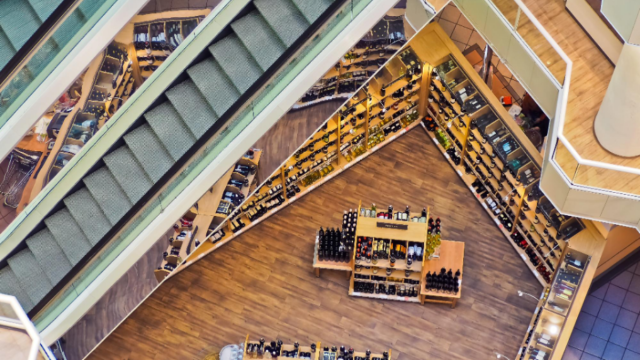Technology is consistently transforming industries across the board, retail included. Brick-and-mortar stores have felt the push to adapt to the continually evolving needs and preferences of customers. As we look to the future, various technological advancements and innovations are set to revolutionize the in-store shopping experience even further. In this article, we will explore some of the major changes poised to reshape the traditional retail landscape.
Merging POS Systems with In-Store Technologies
Contents
- Merging POS Systems with In-Store Technologies
- Augmented Reality to Enhance Shopping
- Artificial Intelligence for Improved Customer Service
- Frictionless Checkout Experiences
- Smart Shelves
- The Emergence of the Smart Store
- Predictive Analytics for In-Store Marketing
- Virtual Reality for Immersive Trials
- Advanced Geolocation and Mobile Integration
- Blockchain for Greater Transparency and Security
- Conclusion
Integrating a small business POS system with innovative in-store technologies can greatly benefit retailers and customers alike. This interconnectedness can lead to improved inventory tracking, seamless digital payments, and deeper insights into shopping behavior. Adapting to these advancements will open up numerous opportunities for customization and efficiency in retail stores.
Augmented Reality to Enhance Shopping
Augmented reality (AR) brings digital elements into a shopper’s environment, enhancing the retail experience. This technology allows customers to visualize how a product will look in their homes or on their bodies without ever leaving the store. As AR applications become more widespread, the process of buying clothing or furniture will become even more convenient, ushering in a new era of seamless in-store experiences.
Artificial Intelligence for Improved Customer Service
AI technologies, such as chatbots and virtual assistants, are already revolutionizing customer service by providing instant support and information. In brick-and-mortar stores, AI-powered robots could roam the aisles, assisting customers in locating products or answering questions, thus improving customer satisfaction and retail efficiency.
Frictionless Checkout Experiences
One of the primary pain points for many customers is lengthy checkout lines. Ensuring that the checkout process is as fast and hassle-free as possible can be a game changer for brick-and-mortar stores. Amazon Go showcases this with its cashier-free retail experience, enabled by computer vision, sensor fusion, and deep learning technologies. As more stores adopt similar technology, we can expect a future where frictionless checkouts will become the standard.
Smart Shelves
As stores seek to optimize inventory management and streamline customer shopping interactions, smart shelves are becoming an essential tool. These digitally connected shelves monitor inventory, help with targeted advertising, and provide data on which items are popular or need re-ordering. Employing smart shelf technology in brick-and-mortar stores could help reduce the frequency of out-of-stock situations and increase overall inventory efficiency.
The Emergence of the Smart Store
The future of retail will likely see a shift towards smart stores, powered by IoT (Internet of Things) and other connected devices. These establishments will gather data to not only optimize sales and inventory management but also provide a more personalized shopping experience. Shoppers can expect tailored product suggestions, digital dressing rooms, and other forward-thinking features that enhance the in-store experience.
Predictive Analytics for In-Store Marketing
Retailers have already begun digging into customer data for refining marketing and sales strategies. Predictive analytics can help to further inform in-store marketing efforts, such as offering promotions or recommendations based on customers’ shopping behaviors and preferences. As data analysis techniques become more advanced, stores will be able to craft a much more personalized marketing experience that keeps customers engaged and entices them to spend.
Virtual Reality for Immersive Trials
Virtual reality (VR) can bring an entirely immersive shopping experience to customers. Stores can create virtual environments to showcase how products look and feel, enabling customers to test a wide range of items digitally before making a purchase. By enabling virtual trials, brick-and-mortar stores could further eliminate the need for physical trial rooms and create a more dynamic shopping experience.
Advanced Geolocation and Mobile Integration
The integration of geolocation and mobile technology in retail stores can enable accurate in-store navigation, helping customers find products easily, check prices instantly, and access personalized deals and promotions. By connecting the store experience to customers’ personal devices, retailers can create personalized and contextual interactions, enhancing customer satisfaction and driving more targeted sales.
Blockchain for Greater Transparency and Security
Blockchain technology has the potential to increase transparency and security in the retail industry. By using blockchain, stores can maintain a tamper-proof and decentralized record of transactions, generate trustworthy product authenticity, and ensure ethical supply chain management. This transparency can help consumers make informed purchasing decisions, while securely managing data to maintain customers’ privacy.
Conclusion
As retail technology continues to evolve, a new future of seamless, personalized shopping experiences awaits. From smart shelves to smart stores, augmented reality to artificial intelligence, the in-store retail landscape is on the cusp of a significant transformation. Embracing these technologies will not only improve the efficiency and profitability of brick-and-mortar stores but also pave the way for a more engaging and enjoyable shopping experience for consumers.


